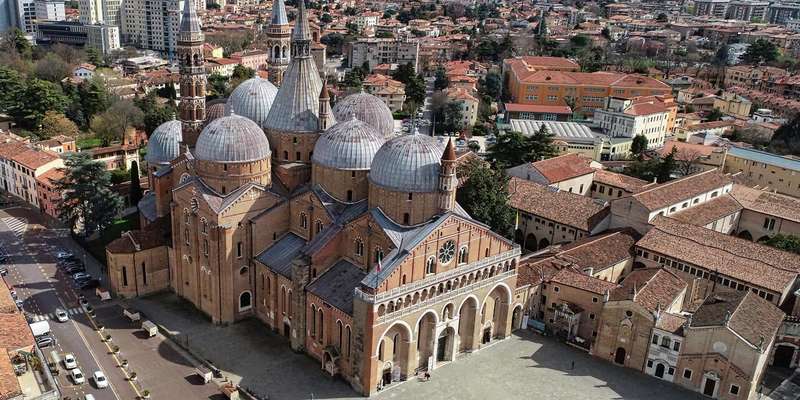- Home
- Useful Tips
- Avoiding peak times at Padua's...
Standing before Padua's breathtaking Renaissance fresco cycles should be a transcendent experience, yet overcrowding threatens to turn artistic pilgrimage into stressful endurance. Recent UNESCO reports show visitor numbers to the Scrovegni Chapel have surged 40% since its 2021 World Heritage designation, with peak hours seeing wait times exceeding two hours. The delicate nature of these 14th-century masterpieces means strict humidity-controlled entry systems create bottlenecks, while rushed viewing slots leave many feeling they've missed the nuance of Giotto's genius. Art lovers face an impossible choice: brave the jostling midday masses or risk being turned away from timed-entry slots altogether. This tension between access and preservation is particularly acute in Padua's fresco network, where limited-capacity sites like the Basilica of St. Anthony compound the challenge with complex multi-venue ticketing systems.


Why Padua's fresco crowds ruin the experience (and how to avoid it)
The magic of witnessing Giotto's revolutionary perspective in the Scrovegni Chapel evaporates when you're herded through in 15-minute slots with 25 strangers. Morning hours between 10am-12pm see the worst congestion, as cruise ship day-trippers collide with school groups and independent travelers. What many don't realize is that Padua's university rhythms create natural lulls - locals know Wednesday afternoons when students are in lectures often see thinner crowds. The Basilica del Santo's Oratory of St. George faces similar pressures, with its vibrant Altichiero frescoes becoming near-impossible to appreciate when three tour groups occupy the tiny space simultaneously. Humidity controls mean doors remain closed between groups, creating a stop-start viewing experience that fragments contemplation of these narrative masterpieces.
The secret time windows locals use for peaceful viewing
Padovani have perfected the art of fresco appreciation through strategic timing. For the Scrovegni Chapel, the golden hour isn't at dawn but 1:30pm - when Italian lunch rituals clear out venues just before afternoon slots begin. Winter weekdays offer unexpected serenity, with November through February seeing 60% fewer visitors according to Padua's tourism office. The Baptistery's stunning Giusto de' Menabuoi cycle becomes almost private if visited during the 12:30-1:30pm closure when guards permit quiet viewing from the doorway. Savvy art lovers coordinate their visits with university exam periods (mid-January and June), when student traffic dwindles. An often-overlooked trick is targeting the last Thursday of each month, when combined ticketing for Padua's seven fresco sites creates more dispersed visitor flows throughout the city.
Navigating Padua's complex fresco ticket system like a pro
Padua's fragmented ticketing confounds even seasoned travelers - the Scrovegni requires advance reservations while the Eremitani Museum sells same-day passes, and Basilica del Santo operates on donation basis. This disjointed system leads many to waste precious hours in wrong queues. The official Cappella Scrovegni app offers real-time capacity updates, showing exactly when 20-person slots have availability (typically every odd hour). For the Palazzo della Ragione's astrological frescoes, purchasing from the adjacent café includes priority access through a little-known side entrance. Those visiting multiple sites should note the Padova Card becomes cost-effective after just two venues, and includes unlimited local transport to efficiently hop between dispersed fresco cycles. Conservation rules mean all tickets specify exact entry times, but staff often permit early entry if space allows - always ask politely about 'anticipare l'ingresso'.
Beyond the Scrovegni - underrated fresco cycles with no crowds
While masses cluster at Giotto's masterpiece, Padua hides equally significant fresco cycles in serene settings. The Oratorio di San Michele's 14th-century Passion cycle sits undisturbed near the university, its emotional intensity best appreciated in solitary contemplation. At Santa Margherita Chapel, Tommaso da Modena's innovative use of perspective predates the Scrovegni by decades, yet rarely sees more than five visitors daily. The Museo Diocesano safeguards Guariento's enigmatic angel frescoes in a climate-controlled gallery where you'll often have the space to yourself. For those willing to venture slightly further, the Abbazia di Praglia's refectory houses a magnificent Last Supper fresco that monastic schedules keep crowd-free outside Sunday mornings. These alternatives don't just offer respite from crowds - they provide crucial context showing how Padua's fresco tradition evolved beyond its most famous example.



